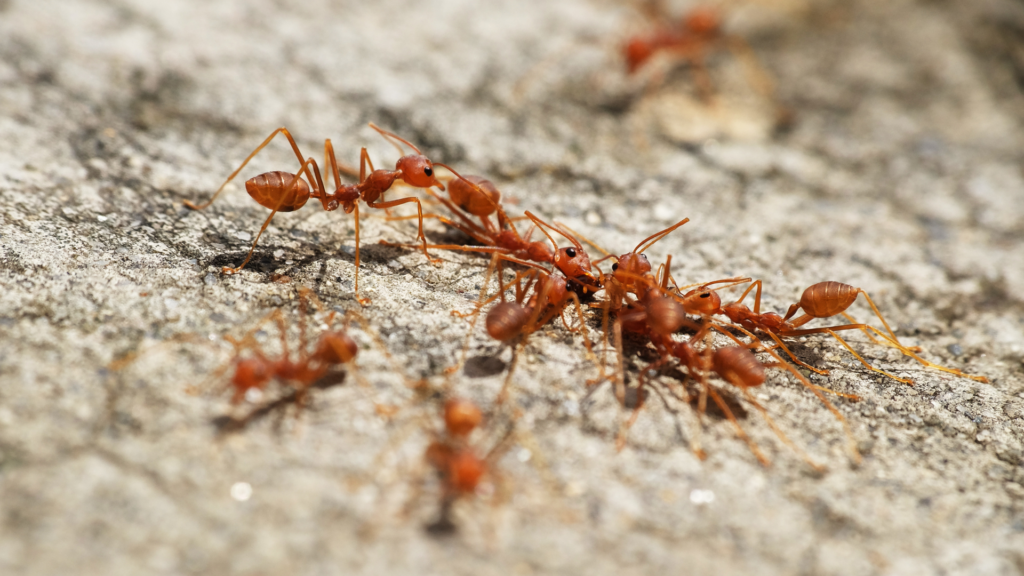Overview of Fire Ants in Georgia
Fire ants in Georgia are a serious nuisance and health concern. Known for their aggressive behavior and painful stings, fire ants can quickly overrun yards, gardens, and sometimes even enter homes.
Their stings can cause severe allergic reactions, and their colonies grow rapidly without intervention. Professional pest control is often required to eliminate fire ants and prevent them from returning. Learn more about other local pests in our Pest Library.
Common Fire Ants in Georgia
Fire ants are reddish-brown to dark brown and range from 1/8 to 1/4 inch in length. Worker ants vary in size, which is a common identifying trait.
The most visible sign of fire ants is their large, dome-shaped mounds, which can reach up to 18 inches high. These mounds often appear after rain and may lack visible openings. Fire ants are especially active during Georgia’s warm spring and summer months.
Similar to mosquitoes in Georgia, fire ants become especially problematic during hot, rainy seasons when breeding conditions are ideal.





